Wet and Wild Maui
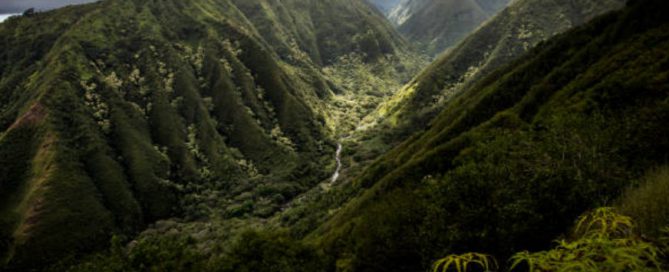
While you are visiting the tropical island of Maui, you may not know about some wet and wild connections. Our moist story begins in the two mountain regions—Pu'u Kukui, in the West Maui mountains gets an average of 366 inches of rainfall a year, while "Big Bog" in East Maui gets drenched with over 404 inched of rain per year. These spots are in the top 10 wettest places on earth. And for the water, it’s all downhill from there.
There is a linked system of upland watersheds, gulches, streams, underground springs, aquifers and flood plains. One of the last stops is hard-working wetlands, providing more than wonderful life to the flora, fauna and human inhabitants.
Exploring Maui Wetlands
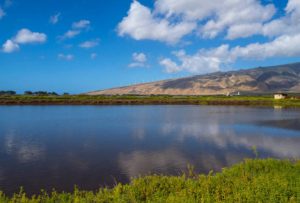 You may see one of these important wetlands when journeying near the beach in North Kihei. Fed from underground springs, with some brackish water from the sea, the watershed at Keālia Pond National Wildlife Refuge creates a vital link between the land and ocean.
Conditions occur here that attract Hawai‘i's endangered wetland birds, along with migrating feathered friends from as far away as Alaska and Canada, and occasionally from Asia—and that is just one of the wetland areas of the island.
You may see one of these important wetlands when journeying near the beach in North Kihei. Fed from underground springs, with some brackish water from the sea, the watershed at Keālia Pond National Wildlife Refuge creates a vital link between the land and ocean.
Conditions occur here that attract Hawai‘i's endangered wetland birds, along with migrating feathered friends from as far away as Alaska and Canada, and occasionally from Asia—and that is just one of the wetland areas of the island.
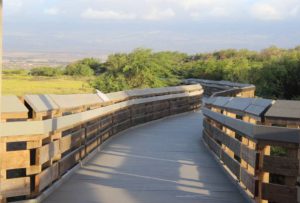 There are viewing areas. The Kealia Coastal Boardwalk is an easy 0.9 mile (out and back) boardwalk trail is peaceful and picturesque, with views of wetland interchange with the beach and ocean, as well as pond wildlife viewing areas with interpretive signs. It is located on North Kihei Road, just north of town.
There are viewing areas. The Kealia Coastal Boardwalk is an easy 0.9 mile (out and back) boardwalk trail is peaceful and picturesque, with views of wetland interchange with the beach and ocean, as well as pond wildlife viewing areas with interpretive signs. It is located on North Kihei Road, just north of town.
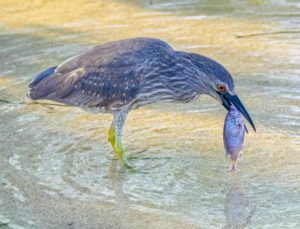 The main entrance for Keālia Pond National Wildlife Refuge is often overlooked, off the Kihei end of Veterans Highway 311. This hidden wetland treasure is at the transition point between urban development and agriculture fields. In addition to an interpretive center, there are ample opportunities to explore the peaceful solitude of the wetlands, and observe endemic species such as the endangered ae‘o (Hawaiian stilt) and ‘alae ke‘oke‘o (Hawaiian coot), and migratory birds in their natural habitat. Winter is a great time to visit, with over 30 species of waterfowl at the refuge.
Threats for Maui Wetlands
The main entrance for Keālia Pond National Wildlife Refuge is often overlooked, off the Kihei end of Veterans Highway 311. This hidden wetland treasure is at the transition point between urban development and agriculture fields. In addition to an interpretive center, there are ample opportunities to explore the peaceful solitude of the wetlands, and observe endemic species such as the endangered ae‘o (Hawaiian stilt) and ‘alae ke‘oke‘o (Hawaiian coot), and migratory birds in their natural habitat. Winter is a great time to visit, with over 30 species of waterfowl at the refuge.
Threats for Maui Wetlands
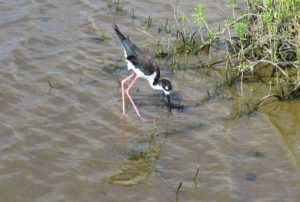 Wetlands help improve water quality naturally. Wetlands act like giant sponges or reservoirs. During heavy rains, they absorb excess water to help limit coastal flooding. Conversely, wetlands protect coastal areas from storm surges from the ocean.
However, like many growing areas, wetlands are often under threat by increased development, overpopulation and degraded watersheds. Climate change is also increasing the severity and frequency of droughts and intense storms, creating a “formula for disaster” such as “mud floods” that pollute the ocean and harm the reef.
How visitors can help protect Maui’s coastal watersheds
Thoughtful decisions while visiting can help protect Maui’s watershed and reef, including:
Wetlands help improve water quality naturally. Wetlands act like giant sponges or reservoirs. During heavy rains, they absorb excess water to help limit coastal flooding. Conversely, wetlands protect coastal areas from storm surges from the ocean.
However, like many growing areas, wetlands are often under threat by increased development, overpopulation and degraded watersheds. Climate change is also increasing the severity and frequency of droughts and intense storms, creating a “formula for disaster” such as “mud floods” that pollute the ocean and harm the reef.
How visitors can help protect Maui’s coastal watersheds
Thoughtful decisions while visiting can help protect Maui’s watershed and reef, including:
- Conserve water- take shorter showers, and turn water off when not in use.
- Reduce, re-use and recycle plastics, glass, cans and paper.
- Whatever materials you take into our natural environment- hiking trails, beaches and parks, please pack it out with you.
- Participate in beach cleanups.
- Cut up the rings of plastic six-pack holders so that aquatic life and birds cannot become entangled in them.
- Don't pour toxic materials, chemicals or any medications down the toilet.
- Use reusable shopping bags rather than paper or plastic ones.
- If you buy any cleaning or laundry products while here, choose non-toxic ones.
- Choose products with minimal packaging.
September 12th, 2022 | Beach, Culture, Environment, Ocean, Wildlife




